Other Materials
Artistic practices among Inuit communities*
[*To get more information about Inuit communities and their art, please, see “Inuit art communities” category]
Ceramics in Kangiqliniq (Nunavut)
Kangiqlinirmiut (people who live in Kangiqliniq) share their artistic production between ceramics, carvings, prints, drawings, watercolours and bronze castings. Whereas sculptural and graphic arts started to develop in the 1950s, the first ceramics workshop opened in 1963 and run until 1977. The current workshop was opened in the 1990s by a new generation of artists.
Sculptors such as George Arlook, John Tiktak, Hunter Toonoo, work with steatite and serpentine (hard grey stone and black stone) as well as ivory and in ceramics; they are widely admired for his sculptural representations of the human form and face and organic shapes. Their artistic creations illustrate traditional themes in innovative ways.
Tapestry in Panniqtuuq (Nunavut)
Tapestry was introduced to the women of Panniqtuuq thirty-five years ago. Inuit women have always been excellent sewers; the welfare of Inuit families depending on their abilities to create handmade clothing that was warm, wind-proof and water-tight.
Panniqtuuq's artists range creations from warm woollen clothing (hats, scarves mitts, amautik ties, sweaters, wraps and kamiik), to cozy blankets, to traditional dolls, to well-crafted jewellery made of caribou antler, ivory, bone) to embroidered wall hangings, as well to prints and to small carvings in stone, antler, and ivory.
Wall-hanging in Arviat (Nunavut)
Women in Arviat make wall hangings which traditionally show caribou skin figures with faces carved from bone or antler. Dolls with soapstone or dried sealskin faces, are also made by artists Martina Anoee and Alice Akkamuk.
Arviat Hamlet also holds: the Margaret Aniksak Visitors Centre where are exhibited traditional Inuit life and artefacts from the Arvia’juaq archaeological site; the Arviat Sivulinut Elders Society which offers instruction in string games, throat singing and holds traditional cookouts of caribou heads, hooves for example; a Kiluk Sewing Centre which offers local art and crafts for sale and the Ulimaut Carving Shop provides a workspace for carvers in Arviat.
More recently, Daniel Alareak has made jewellery since 1994, working with walrus tusk ivory, and is now incorporating metal into some of his jewellery pieces.
Sewing and carving in Kuujjuaraapik (Nunavik)
The art making such as carving and sewing started to expand when the Hudson's Bay Company opened a trading post called Great Whale River in 1820 on the site of today's Kuujjuaraapik. The main activities at the post were processing whale products of the commercial whale hunt and trading furs, but carvings were often exchanged for tools.
By the late 1960s, carving making grew up and more and more carving were sold down South through the Fédération des Coopératives du Nouveau Québec (established in 1967 to provide the growing co-operative movement with more effective powers and services to help attain their vision: atautsikut/together - working to develop as a people, leaving none behind).
Certain artists became very famous on the international art scene thanks their carvings, printmaking and drawings depicting more often animals and myths into a strong style: not much detailed composition but simple lines with the main characteristics of their topics.
Josie Napartuk (1901-1980) and his son Henry Ainalik Napartuk (1932-1985), as well as Lucy Meeko (1929-2004) were renowned for their carvings and print makings. Today, there is just a few number of artists in the community such as Alec Lawson Tuckatuck (1976-) who carves from soapstone, caribou antler, muskox horn, walrus tusks (he has his own website: http://www.inuitstonecarving.com/about_me.html). Lizzie Amiaku Papialuk (1941-) and Emily Novalinga (1954-) make coiled grass baskets.
Jewellery in Inujjuaq (Nunavik)
On March, 2009 – Aumaaggiivik Nunavik Arts Secretariat, a new department at Avataq Cultural Institute to support and nurture the artists of Nunavik, officially kicked off activities earlier this month with a pilot training project in Inujjuaq. The Inujjuaq Jewellery Project began the first of two 8-week training modules on March 2, 2009. Inujjuaq artists will learn the aesthetic, technical and cultural aspects of high-end jewellery-making. The goal is to create an inspiring and dynamic learning environment that supports open exchange among carvers and jewellers.
The Inujjuaq Jewellery Project was made possible thanks to the long-term loan of a building in Inujjuaq owned by Makivik Corporation as well as contributions from Kativik Regional Government’s Diversification Fund and Employment and Training program, and Kativik Local Development’s Socio-Economic Fund. The course and workshop space were designed by Montreal media artist Catherine Béchard, a former jeweller with extensive experience in Northern communities, in collaboration with Bruna Mastroianni of Kativik School Board. Students from Nunavimmi Pigiursavik Adult Education Centre participated in the building renovations. Instructor Linda Brown will work with artists Joanasie Elijassiapik, Andrew Nulukie, Laina Nulukie, Eva Lucy Inukpuk, Inuksiak Arnamissak, Elijah Tukai, Jeffrey Kasudluak, and Clara Kasudluak.
Caribou antler carvings in Kangiqsualujjuaq
Located on the eastern shore of Ungava Bay in Nunavik (northern Quebec), Kangiqsualujjuaq (formerly George River) began specializing in caribou antler sculptures since the 1970’s. Kangiqsualujjuaq means in Inuktitut (Inuit language) “very large bay”; about 750 people (2006) live in this Inuit community. “What we show in our carvings is the life we have lived in the past right up today. We show the truth” say Inuit artists.
The importance of depicting the reality of daily Inuit existence, as well as events described in Inuit oral history, mythology and personal recollection, is a current that has run through fifty years of Nunavik sculpture. Artworks from Kangiqsualujjuaq have sometimes a tendency toward distortion and expressionism in human and spirit faces and bodies inspired by shamanism and spirits’ transformation scenes.
Although the international art market values the achievement of “classic” 1950s Nunavik art, it very much encourages and rewards innovation today. Inuit have been making antler sculptures for centuries related to shamanism and nomadic way of life. Thus moving from winter camp to summer camp, traditional ivory carvings and antler sculptures were on small size. But the size of artworks significantly increased, both linked to the development of the Inuit art market on an international scale as well as the arctic communities’ establishment and forced sedentarization.
Antler is commonly utilized material: Inuit hunt caribous to eat their meet, to wear their skin, to change their antler into tools and sculptures, etc.; caribou shed their antlers each year. Inuit artists often combine antlers with stone, whalebone or ivory. Caribou antlers (like ivory) are usually worked with smaller flexible-shaft grinders, saws.

